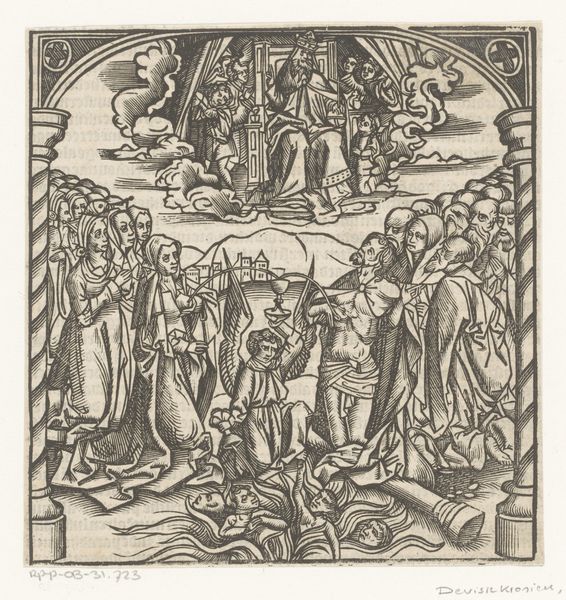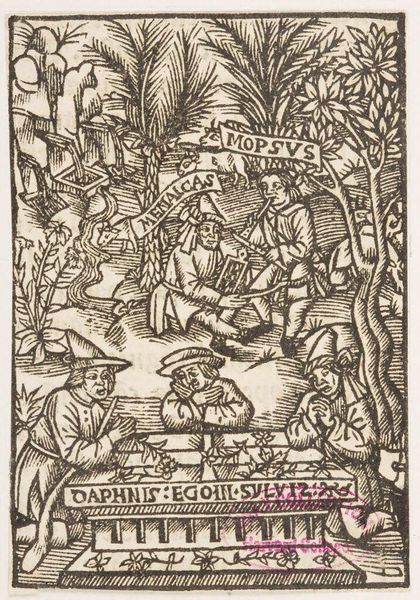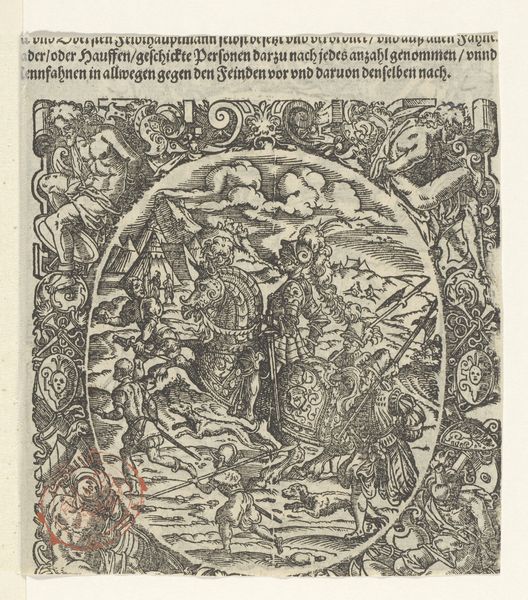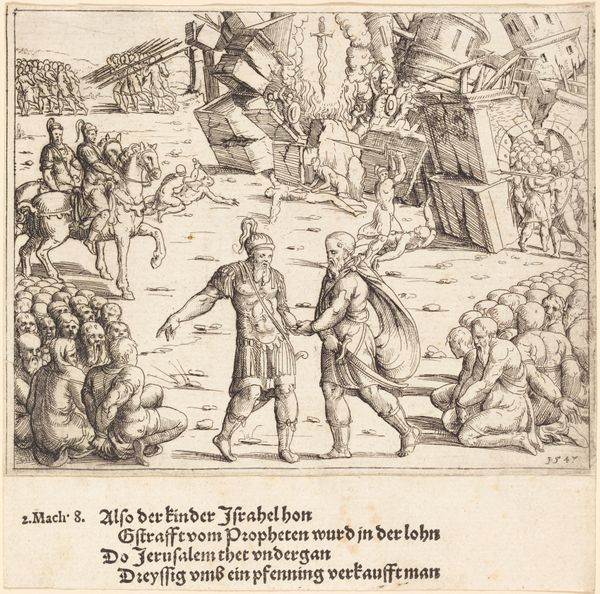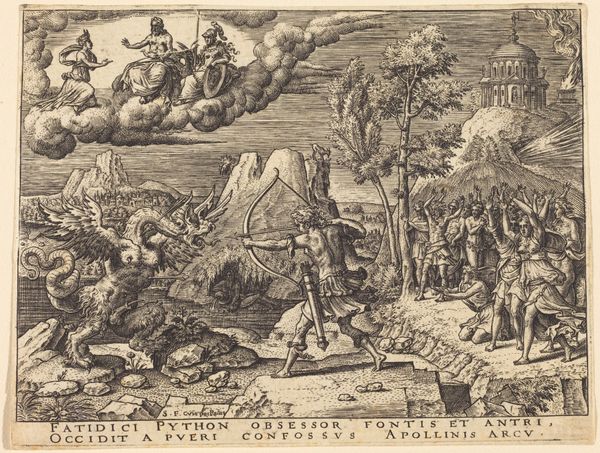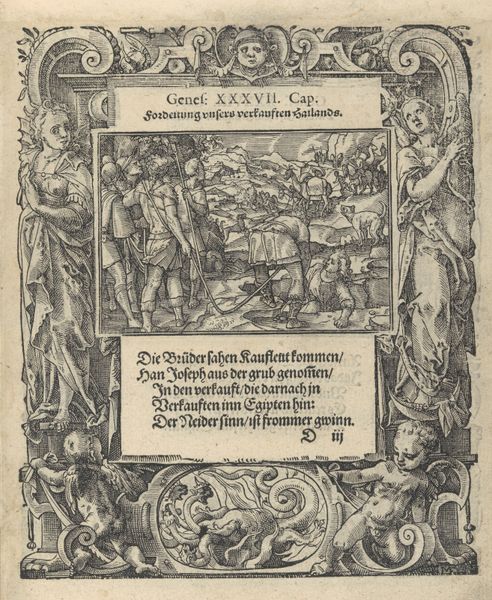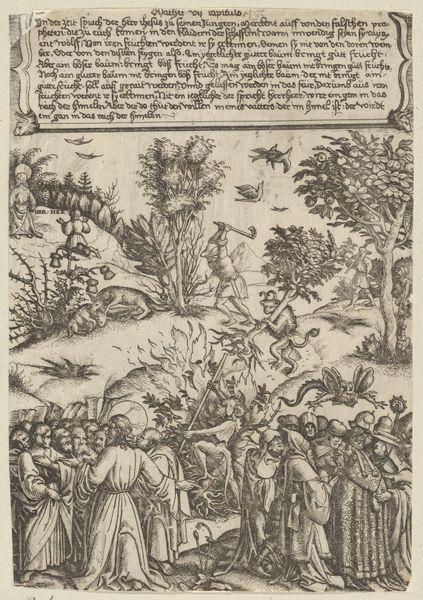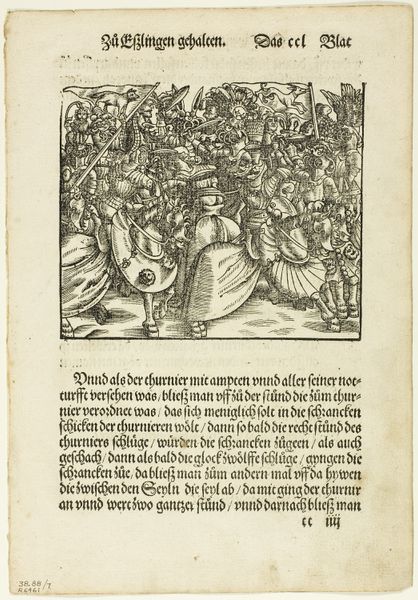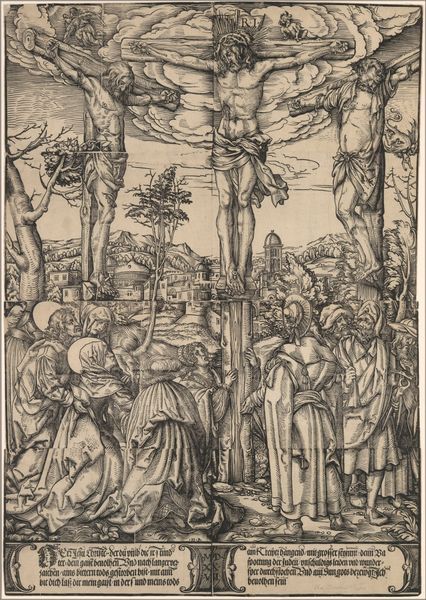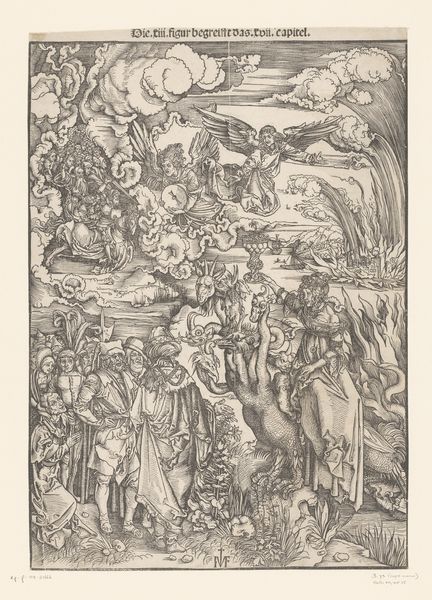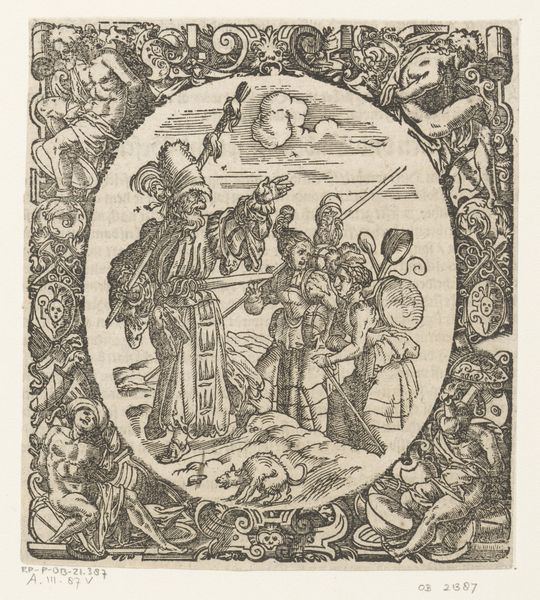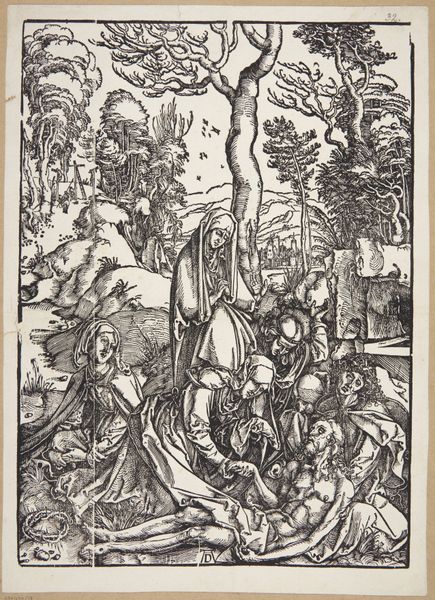
The Passage of the Red Sea (recto) and The Burial of Jacob (verso) from Neuwe Biblische Figuren, plate 48 from Woodcuts from Books of the XVI Century c. 1565 - 1937
0:00
0:00
drawing, print, paper, woodcut, engraving
#
drawing
# print
#
paper
#
woodcut
#
history-painting
#
northern-renaissance
#
engraving
Dimensions: 109 × 153 mm (image, recto); 139 × 154 mm (image/text, recto); 109 × 154 mm (image, verso); 135 × 154 mm (image/text, verso); 152 × 195 mm (sheet)
Copyright: Public Domain
Curator: Let's discuss "The Passage of the Red Sea (recto) and The Burial of Jacob (verso) from Neuwe Biblische Figuren, plate 48 from Woodcuts from Books of the XVI Century." It’s a woodcut on paper, created around 1565, and printed no later than 1937. Editor: It's striking. The swirling chaos on one side, balanced against what looks like an orderly procession. Visually, the high contrast and densely packed figures create a feeling of overwhelming intensity. Curator: Indeed. The composition directs the eye. We have a clear division, haven't we? Moses at the center, his figure acting as the compositional linchpin, dividing triumph from disaster. Editor: Yes, and that symbolic weight of Moses as an iconic leader is powerful. The act of parting the sea—a testament to divine intervention and leadership, which offers the viewer an entry point into cultural narratives surrounding faith and deliverance. Note how the sea consumes the Egyptians on the right, and is bisected down the middle of the illustration with very subtle but firm clarity. Curator: The artist, Jost Amman, masterfully uses the woodcut medium to delineate each figure. The texture from the line work enhances the dramatic movement. The contrast between light and dark areas really underscores the themes of salvation versus destruction. Editor: Exactly, the sharp contrasts also draw upon our collective cultural memory of the Exodus narrative; we readily recall and invest it with emotional associations of struggle, hope, and divine favor. These aren’t just figures, but emblems within a larger cultural framework. Curator: It's interesting how Amman frames the historical narrative within these tight confines of the print medium. The structure allows the story to unfold compactly and precisely to disseminate moral teachings to contemporary society. Editor: So, while I consider the visual coding inherent in the images, how they serve as cultural touchstones, you find more significance in Amman’s choices about pictorial space. Interesting how formalism enhances and elevates the religious components in different, unique ways. Curator: Agreed. These intrinsic elements are paramount to revealing these works in all their glory. Editor: Absolutely. These details build bridges connecting us across centuries, and letting us perceive what makes art not just old—but continually relevant.
Comments
No comments
Be the first to comment and join the conversation on the ultimate creative platform.

